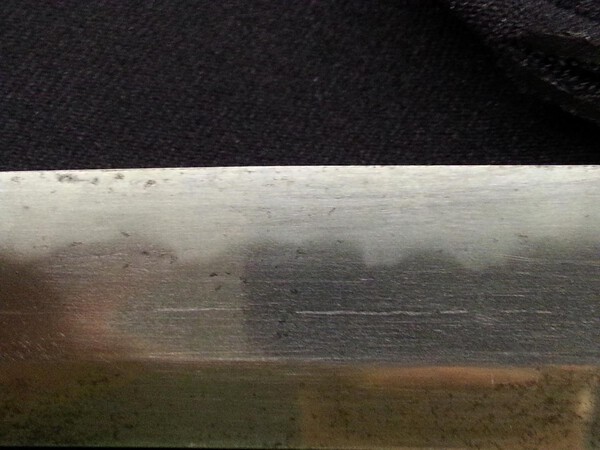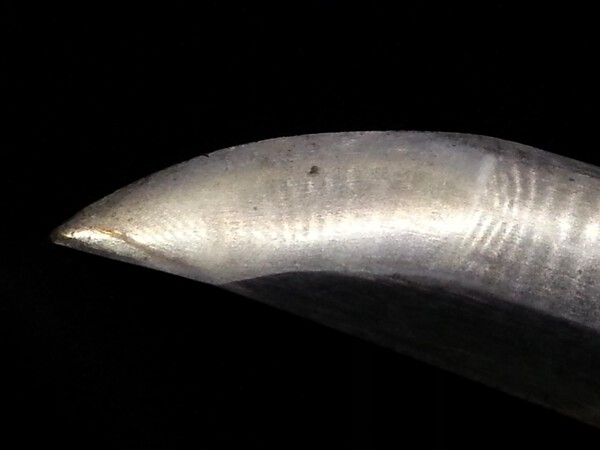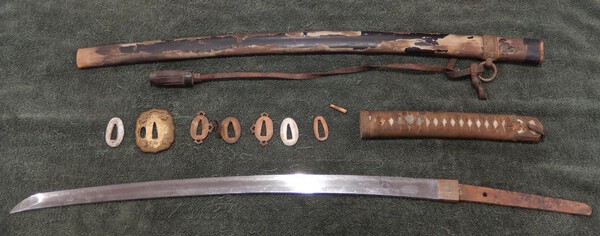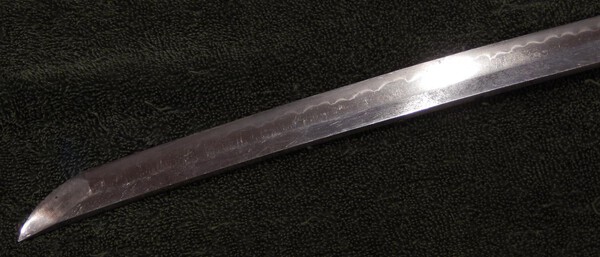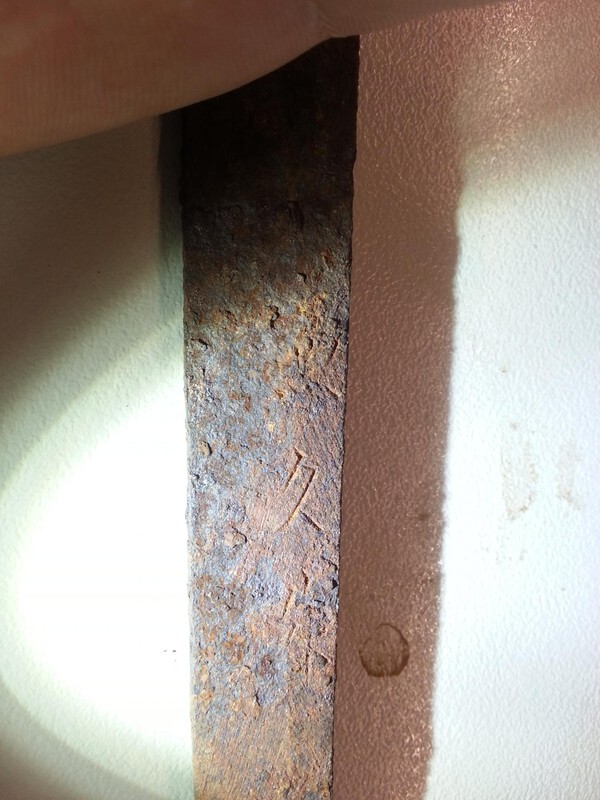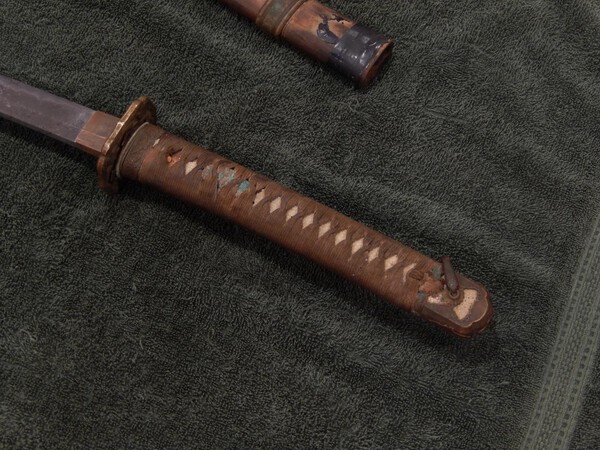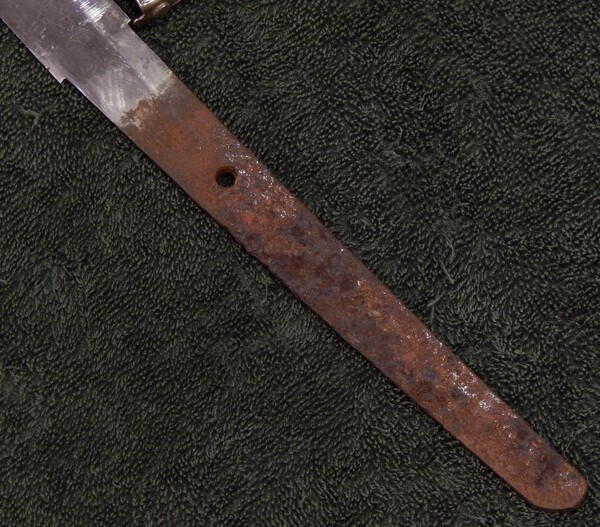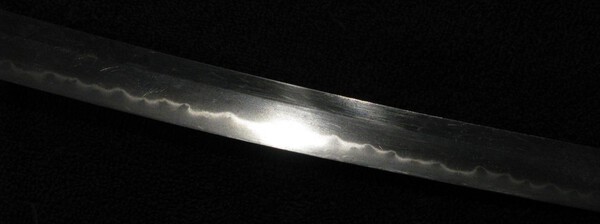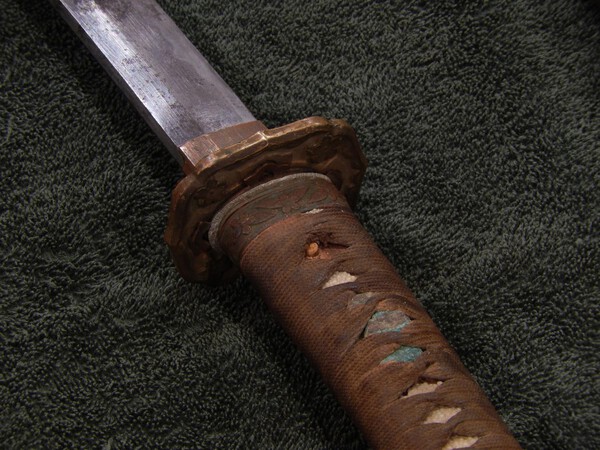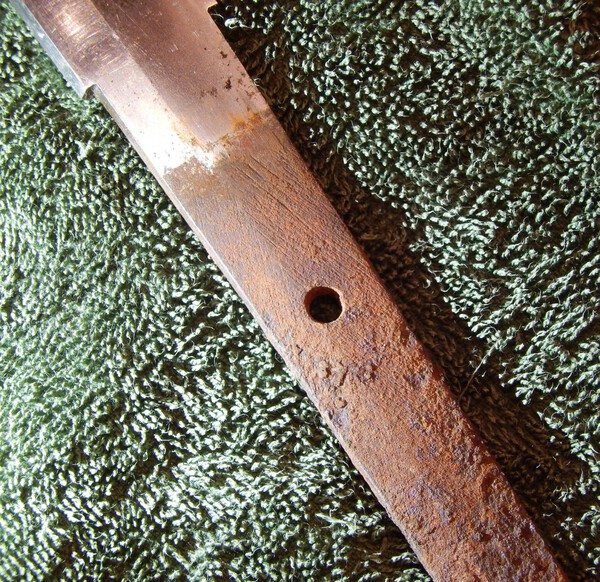
andym
Members-
Posts
14 -
Joined
-
Last visited
Content Type
Profiles
Forums
Events
Store
Downloads
Gallery
Everything posted by andym
-
Thanks George for your reply. Your assumption about me having limited experience with Japanese people is correct, although the few I've worked with in the past seemed just like everyone else I've ever met. Did I miss something? Not particularly relevant here anyway since this question was about our western preconceptions. The whole point of the discussion was to highlight our/my assumptions. I did a search before my first post as you suggested. If this has been thrashed out before then I'm afraid my search skills have failed me. Can anyone provide links to the relevant topics or at least the search terms to find them? Andrew
-
Ah Brian, I fear you may have misinterpreted my question. I was not advocating the changing of centuries old traditions and methods at the hands of westerners. Quite the opposite actually. I went off on a tangent that made my post rather rambling. I tend to do that. My question was more about our perceptions of quality of qualification. It does seem that, with all else being equal, we add perceived value to a craftsman's qualifications simply by virtue of the nationality of their sensei. Of course this is not simply restricted to polishers. Can a western smith make a true nihonto outside Japan if they are trained in Japan and adhere to traditional methods and materials? What about their apprentices? Something about this makes me uncomfortable. Perhaps if I don't want to see what's in the room I shouldn't peek through the keyhole. Andrew
-
A lot of valid and qualified opinions here. I wouldn't mind responding on Jean's comments with another question (with a long intro). I'm not sure I agree with the notion that Japanese people are somehow gifted with longer attention spans (and shorter legs) than westerners. In my experience every culture on the planet has its share of lazy people with small intellects that crave instant gratification via an easy path. Likewise every culture has people that get joy in persisting with a calling until they master it. That's the variable nature of humanity and examples are readily visible across the globe both historically and now. Likewise if the ergonomic attributes of the Asian physique were the dominant factor then we'd see a bunch of Japanese trained Chinese, Taiwanese, etc etc polishers popping up. Of course, given their Japanese training we'd all fall over each other to get our blades polished by a Chinese togi at half the price of getting it done in Japan. Right? Right? (listens to the silence) This is (slightly) beside the point however. The point behind my original question was to explore the idea of there being some undefined (or possibly imagined) quality of Japanese expertise that is diluted by every degree of separation from its source. I had always thought that the idea behind an apprenticeship was for the student to learn enough to eventually become a master themselves. The sensei in the video confirms this when he states his hopes that his students grow to become better than even his own sensei. That's what it's all about; otherwise there can only be a continual loss of knowledge. To be a master at anything does not simply mean doing what your predecessors have done by rote but rather bringing your own understanding to the craft and making it your own. This is how this knowledge was accumulated in the first place. I see no validity in the argument that a westerner is somehow less capable of doing this than anyone else. If a qualified western polisher figures he can achieve the same or better result using a raised work platform he can sit or stand at with his excessively long western legs then perhaps that's his contribution to the craft. So, if a Japanese trained western polisher took on an apprentice who then went out on their own and took on an apprentice who then went out on their own, how many here would consider them fully qualified to remove metal from a prized blade now that their knowledge of a Japanese craft is essentially third hand? If your answer is a big “nope” then what is it about the Japanese culture/mindset that makes their training superior given that the process of learning that’s been done for centuries in Japan is essentially the same as my example? Are we, as westerners (apologies to any non westerners reading this), imagining romantic attributes that don’t exist? I’m just as guilty as anyone of romanticising foreign cultures but I do like to occasionally self-reflect to at least attempt to legitimise my attitudes. Apologies if my brain dump offends in any way. Andrew
-
Heh, no. Although while I have come to a phase in my life where I do question if I want to sit behind this desk until I retire, I can't imagine my better half would approve me going off for years to be an apprentice. It just seemed to me that there is a large togi vacuum outside Japan that seemed odd. Normally these things tend to correct (or even over-correct) themselves fairly quickly given an open market. I was wondering whether a craftsman trained outside Japan by another westerner would have ... preconceived perceptions ... to overcome. If Woody Hall is doing alright then my question is answered. Andrew
-
Yes. Yes it does. Thanks Ken. Is this a common thing? Andrew
-
Greetings all. After a lot of reading on this forum and elsewhere I see a lot of good arguments for only getting nihonto polished by someone who has completed their apprenticeship in Japan. No argument from me since the potential to permanently damage a blade via a combination of hubris and ignorance is high. The same general preference for Japanese trained craftsmen seems apparent in other areas like the production of koshirae. Again, given the rich history and many nuances of the craft I concur. But the obvious supply and demand gap for blade polishers, as evidenced by the long waiting times, makes me wonder. Is a western polisher who has completed a Japanese apprenticeship qualified to take on their own apprentice? Would that apprentice then become as qualified as if they had done their apprenticeship in Japan? Sorry if this has been brought up already. Andrew
-
Yet Another Inherited Gunto Katana/wakizashi
andym replied to andym's topic in Military Swords of Japan
Thanks for the info! I figured as much but thought I'd best ask. I'll keep an eye on ebay. The tassel has now become a somewhat academic question since I thought to move it off the saya to the kabuto-gane. The leather turns out to be rotten and brittle and the cord fell apart as soon as I touched it. Sigh Andrew -
Yet Another Inherited Gunto Katana/wakizashi
andym replied to andym's topic in Military Swords of Japan
Not sure if this deserves a new thread or not... In my first pic you can see that the saya is pretty rough. What's left of the black lacquer is loose and falling off. It looks pretty nasty to put on display and my wife hates it. She also hates what's in it but that's another story. Can one of the gunto collectors here offer advice as to if the remaining lacquer is worth retaining from a historical point of view? Would it be a massive faux pas to sand if off and replace it with enamel? Incidentally is the leather tassel thingy normal? I've only ever seen cloth ones. Thanks Andrew -
Yet Another Inherited Gunto Katana/wakizashi
andym replied to andym's topic in Military Swords of Japan
Since this is the first sword I've ever handled I can only go by the wealth of pictures of highly polished blades available here and as such I'd tentatively agree with Steve. If there are/is nioi (is this already plural?) they must be pretty tiny or more likely I don't know what I'm looking for. I took the top photo of the hamon specifically to highlight it with bright lighting. The second photos were with side lighting to try to show the what I thought was evidence of at least some folding. I can not see the rich hada I see elsewhere but I can definitely see the grain structure of the steel in the ji under magnification. Having said that it does look to have the original polish (or perhaps even been polished with Brasso or the like) on one side while the other side has been scratched up with some sort of abrasive so there's a good chance I'm imagining things. It certainly looks different to the photos of art polished blades. I can see no evidence of any seki stamp and there is no hot stamp. I've given it a good rub down with oil and an old t-shirt and a lot of the stains have faded. Perhaps I should take some more photos. I've no intention of selling it but I do want to give it the treatment it deserves. Andrew -
Yet Another Inherited Gunto Katana/wakizashi
andym replied to andym's topic in Military Swords of Japan
Never mind, I've found one. -
Yet Another Inherited Gunto Katana/wakizashi
andym replied to andym's topic in Military Swords of Japan
Perhaps pedantic was too strong and for that I apologise. Oxford dictionary has a somewhat less negative definition but anyway... As an engineer I actually consider being pedantic as a good thing and didn't intend it as an insult. I would prefer there was a hard and fast rule and don't actually care which side of the line my blade falls. But to a novice there does appear to be multiple, fairly loose definitions for these guidelines - Wikipedia being just the most obvious example. So the rule is < 2 shaku => wakizashi. My blade is a wakizashi. Cool. But then I see this: http://www.militaria.co.za/nmb/topic/18610-show-us-your-high-class-gunto/?p=194223. Apparently, according to the actions of the NTHK-NPO, the rule is actually not a rule but a guideline as Ed originally said. My sword is 602mm falling right in what appears to be official tolerances for ambiguity. Or perhaps Rick B is mistaken. Whatever, I'm happy having a wakizashi. The assumption that I am trying to wriggle my blade through as a katana seems biased by what I see as a strange focus of on the monetary value of items. Apparently wakizashi are less desirable although I can't imagine why. Perhaps there is some piece of information I'm missing. If so then I'd love to know. As a continuation of the original intent of this query in researching my wakizashi I've looked up Kanehisa in the database. Lots of results. Is there a legend anywhere describing the components of each entry? I did look but couldn't find one. Andrew -
Yet Another Inherited Gunto Katana/wakizashi
andym replied to andym's topic in Military Swords of Japan
Ok then. It appears I've upset people without meaning to. Firstly I'd like to thank everyone for their help. The sword is apparently unambiguously not a nihonto but is a fairly common, low quality example of war memorabilia, and of little or no value. So be it. It was never about the monetary value anyway. Ed seems to be upset by my not crediting him with the kanehisa saku translation. Here's the thread from SFI http://www.swordforum.com/forums/showthread.php?117451-Inherited-katana for those interested. Look at it from my point of view Ed. Since you were the only one on SFI to bother replying to me that thread constitutes a single opinion by someone I don't know who hedges their statements with disclaimers and then tells me they're not an expert. What would you have me do? There's a saying that Internet opinions are worth what you pay for them but I don't believe that. I actually found your opinion quite valuable. That's why I went directly to a military swords forum rather than embarrass myself by claiming to have found a true nihonto. For that I thank you again. If it makes you feel better I also contacted Kam from http://jigokustudios.com.au/ (he's also a member here) via both email and phone before posting on SFI. He also told be it was a gunto. Perhaps he should be upset too. The reason I didn't mention you here was because I didn't want to bias the discussion with your or Kam's prior evaluation. Regarding the definition of a wakizashi. I know that a katana is >2 shaku. I also know that I've seen several fairly loose definitions. The Wikipedia article for katana actually says 60cm. It also says that katanas were historically as short as 23.5 inches which is 596mm Perhaps rather than attacking me for being confused you should update the article for the benefit of us idiots. It has nothing to do with my approval and such a statement was obviously intended as a dig at my ignorance. Jean C: Your comment that it is not handmade etc. is probably the closest to what I was hoping to learn. Regarding the past treatment of the blade I agree but I can't do anything of fix it. I've gently cleaned and oiled the nakago as per your recommendations although retaining value in worthless tosugu seems pointless. While I'm on a roll let me tell you my motivations for all this. I'm an engineer. As such I see beauty in objects created for a specific purpose that fulfil that purpose with elegance and efficiency. That means both the design of the object as well as the method of its production. To me a paper-clip has beauty. Swords are weapons. I appreciate the beauty of a Japanese blade for the elegance of the design and the wringing out of engineering excellence from primitive materials. That is beautiful to me. I do not collect things for the sake of it and I care not one jot for hamon, nie, nioi, hada or anything else except insofar as they infer (or detract from) the excellence of the sword as a weapon. I don't care if it is made of tamahagane or old railway tracks except for how it affects its excellence as a weapon. I don't care if the smith swung a hammer or used a power hammer except for how it affects the excellence of the sword as a weapon. I don't care about how it was quenched except for how it affects the excellence of the weapon. Hopefully you can see a pattern forming here. That is what I meant when I queried the quality of the blade. I'll bet the original samurais felt the same since their lives depended on it. I do also appreciate the historical significance of nihonto but only in the context of the quality of the weapon and the expertise in its production. That's why I wanted to be sure of what I had so that it could be treated with the respect it deserves. If it turned out to be some NCO stainless steel numbered stick I'd give it to my son to decapitate my wife's flowers with. It's not and so I'll look after it. To me this sword is like a vintage car. I'm not looking at it as a daily drive and I know modern cars are better and there are more pretty cars that are older. It's not sacred but it has a grace imparted on it by being honest about what it is. Incidentally a fairly superficial search brought up a lot of conflicting opinions by metallurgists and modern smiths as to the best sword making material and method. I claim no expertise of my own but certainly can't form one based on what I read so far. It seems there is an awful lot to know on this subject and it is wise to make sure one's ego does not grow larger than one's knowledge. Never mind. I've learned a lot in the last few weeks and people have been universally helpful. I'm off to watch Youtube clips of Tsukamaki. That also is beautiful. Perhaps I can learn how to replace the frayed cord after some practice. Thanks everyone. And since after that little rant I suspect I'll have upset even more people, adieu. Andrew -
Yet Another Inherited Gunto Katana/wakizashi
andym replied to andym's topic in Military Swords of Japan
Wow! Quick replies! Thanks! Probably the main thing I'm hoping to determine is the overall quality of the blade and whether it's worth any attention. Can one tell by looking if it is hand made? I've attached some pics showing what I hope is evidence of laminating but I really don't know what I'm looking for. I'm assuming it's non-traditional made but which elements of tradition have been violated? If it's a hand-made oil-quenched I'll be happy with that. You're right about the mounts being a little worse for wear. The saya is pretty far gone although I am curious as to why it's just lacquered wood. What is the ethic regarding polishing up the metalwork of the mounts? Particularly the tsuba? Is it common for this type of blade to not have arsenal stamp, hot stamp or date? Andrew -
Greetings all. This is my first post and I know very little about nihon-to so please forgive my ignorance if I say something stupid. I have recently inherited a katana/wakizashi gunto from my late uncle. I have no idea where he got it or when. I've been reading up as much as I can on Japanese blades but obviously it needs to be seen by someone who knows a lot more than me to determine if it's even worth having appraised. I am hoping that someone here can tell me a little about it. The nagasa is only 602mm long making it either a katana (>60cm) or wakizashi (<2 shaku = 606mm) depending on how pedantic one is feeling. The boshi extends around and along the top of the kissaki and blends into the hamon cleanly so I don't think it's been shortened. The tang has some corrosion and has a signature - or at least the remains of one. It appears to be 3 or 4 characters but only the second last one is clear. I suspect it says Kanehisa saku but it lacks any trace of a tang stamp or arsenal stamp . There are no date markings on the other side and no numbers anywhere. I can still see file marks toward the habaki and at the end. I have not removed any rust or tampered with the tang at all. Overall I think the blade is in pretty good condition with only one tiny chip about 15cm from the tip and some surface staining. The seems to be no pitting and the ha (apart from the chip) is pristine and pretty sharp all the way to the habaki. One side of the blade appears to have been lightly sanded or scrubbed by some fool with a scourer in the past but they don't appear to have done major damage. I've attached a bunch of photos that attempt to capture the salient points. I have no intention of selling it but neither am I prepared to spend a lot on restoring what might be a low value blade. Basically I'm wondering if I'm wasting my energy getting excited. I hope someone can help. Andrew



